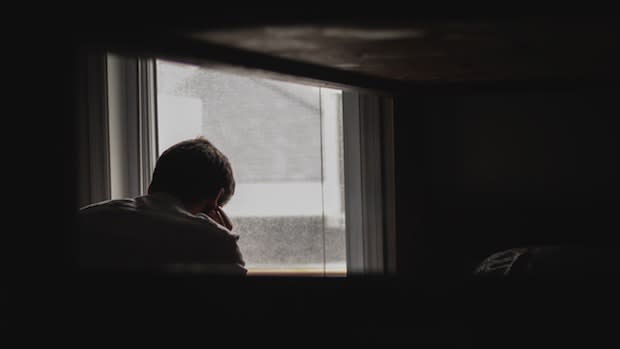Table of Contents
II. Persistent Depressive Disorder (Dysthymia)
III. Premenstrual Dysphoric Disorder
V. Major Depression with Postpartum Onset
VI. Major Depression with Seasonal Patterns
What is Major Depression?
Major depression is a serious mental health condition that can make the smallest everyday activities nearly impossible. There are several reasons why a person may develop depression, but it usually occurs due to a combination of genetic, environmental, and biological factors. Around 6.7 percent of the United States population over 18 is affected by major or clinical depression. It can also affect older adults, children, and teens. Common symptoms of major depression can include:
- Diminished interest in everyday activities
- Recurring thoughts of death or suicide
- Significant weight loss or weight gain
- Restlessness
- General fatigue almost every day
- Impaired concentration
- Insomnia
Major depression differs from other forms of depression because the symptoms are present most days for two weeks. This type is a severe form of depression and requires treatment and the usage of prescription medications like Cymbalta (Duloxetine), Trintellix (Vortioxetine), Rexulti (Brexpiprazole), or Ludiomil (Maprotiline). Major depression can occur to anyone, and there are several different variations of this mental health disorder that can occur throughout a person’s life. [1]
Persistent depressive disorder (PDD) is a form of chronic depression but is typically less severe than major depression. Around 1.3 percent of people in the United States experience dysthymia at some point in their life. This is a fairly new diagnosis and combines dysthymia and major depressive disorder. PDD is a tough condition to live with, and it can affect your mood and behavior most days of the week. [2] Because PDD is chronic, symptoms can persist for several years, and many people may not realize that they are experiencing a mental health disorder. The symptoms are not as severe as major depression, but they can last longer. If you have PDD, you may experience the following symptoms most days for almost two years: PDD is hard to diagnose, and you will likely be referred to a mental health professional to undergo evaluation. Medications for major depression are also used in treating PDD, like Cymbalta (Duloxetine). [3] Premenstrual dysphoric disorder (PMDD) is an unpleasant variation of major depression in the week before menstruation. The timing of PMDD can vary from woman to woman. Still, the symptoms usually subside days after menstruation begins and then come back the week after your period is over. This may sound like premenstrual symptoms (PMS), but PMDD is much more severe and causes extreme mood shifts. The physical symptoms of PMS and PMDD are similar, but the behavioral symptoms are often more intense. Symptoms can include: The National Library of Medicine cites that 3 to 5 percent of women of reproductive age experience PMDD. [5] The exact cause of PMDD is unknown, but researchers have found that those with this disorder typically have underlying depression or anxiety. Hormonal changes during a menstrual period may trigger this mood disorder and lead to severe behavioral symptoms. Delusions or hallucinations accompany this type of major depression. It is also known as major depression with psychotic features. When people experience psychosis with depression, they may have very intense feelings of worthlessness or failure. Psychotic depression is present in around 25 percent of people admitted to the hospital for depression. Those with psychotic depression may experience more erratic behavior and appear out of touch with reality. They may hear voices and have illogical ideas. Psychosis can occur with many mental health disorders, but in the case of depression, hallucinations are consistent with themes of failure and worthlessness. Your doctor may prescribe antipsychotics like Rexulti (Brexpiprazole), which combat these symptoms along with depression. Common symptoms of psychotic depression can include: Postpartum depression (PPD) is a common condition that affects nearly 60 percent of new mothers. Bringing a new life into the world can cause excitement and bliss, but it can also trigger extreme sadness and new mothers' stress. The severity of postpartum can vary significantly, but those who experience symptoms of anxiety, depression, irritability, or confusion for over two weeks may have postpartum. Men may also get paternal postpartum, especially if they have a history of depression, financial difficulties, or a poor relationship with their spouse. If you have severe PPD, it can affect the mother or father's ability to bond with the new baby. In some cases, young mothers may also experience postpartum psychosis, involving obsessive thoughts and hallucinations. If left untreated, PPD may rarely result in the new mother harming herself or the new baby. [7] Developing PPD is often a result of chemical, social, and psychological changes that occur when a woman gives birth. In general, many women experience the “baby blues” after birth. These symptoms include difficulty sleeping, decreased libido, and excessive fatigue. Feeling this way is relatively normal the first week or so after having a baby. The following symptoms may signify a more severe problem and PPD: Those with major depression may experience more severe symptoms during certain times of the year. This disorder is also known as seasonal affective disorder (SAD) and develops during the winter months when there is limited sunlight. The lack of sunlight can worsen depressive symptoms, but these symptoms typically subside in the spring and summer months. In some rare cases, people may experience SAD in the summer instead of the winter months. Luckily, buying a SAD lamp can mimic sunlight and improve symptoms. If you already have a history of depression, you are more likely to experience SAD. If your SAD coincides with major depression, you will need prescription antidepressants like Trintellix (Vortioxetine) or Ludiomil (Maprotiline) along with psychotherapy for proper treatment. [5] Symptoms of SAD usually include: The content in this article is intended for informational purposes only. This website does not provide medical advice. In all circumstances, you should always seek the advice of your physician and/or other qualified health professionals(s) for drug, medical condition, or treatment advice. The content provided on this website is not a substitute for professional medical advice, diagnosis, or treatment.
Persistent Depressive Disorder (Dysthymia)
Premenstrual Dysphoric Disorder

Psychotic Depression
Major Depression with Postpartum Onset

Major Depression with Seasonal Patterns
